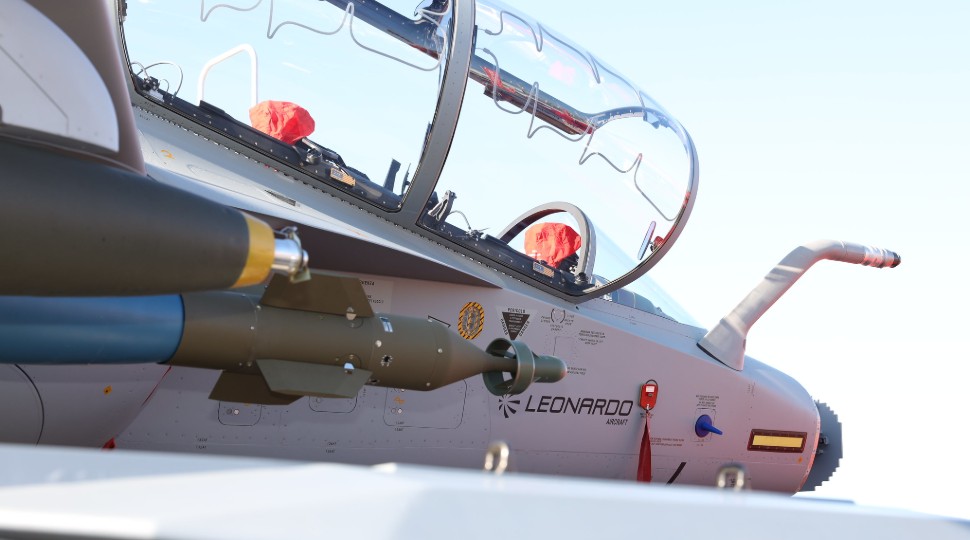Leonardo anticipates achieving service entry in 2021 for the M-346FA – an armed variant of its advanced jet trainer – as certification and integration work continues.
Although it has yet to secure a launch customer for the attack version, the Italian airframer is engaged in several sales campaigns, including for Argentina, which is “looking with interest” at the twinjet.

Leonardo
Separation tests of bombs and air-to-air missiles, including Raytheon’s AIM-9L Sidewinder, have already been performed, with integration of the Grifo M-346 radar and updated avionics now under way in the laboratory.
Certification from Italy’s Armaereo military approvals body is anticipated in late 2020, ahead of probable service entry the following year, says Leonardo.
Achieving that milestone will be key to securing future orders, says Eduardo Munhos De Campos, vice-president of product solutions at the airframer.
“We believe that as soon as we fly the fighter-attack version in its final configuration and we secure certification, this will open up new markets for the M-346,” he says.
The M-346FA will be able to carry a variety of sensors and weapons on its seven external hardpoints, including guided bombs, MBDA Brimstone air-to-surface missiles or a gun pod.
In addition, the company is also working to secure additional orders for the baseline trainer variant, says De Campos.
Late last year, the M-346 lost out to a rival Boeing bid for the US Air Force’s T-X contest, which will see the service acquire around 350 new trainer aircraft.
Although that huge sales volume – and US backing – could give Boeing the edge in future sales campaigns, De Campos is certain that there are “a lot of countries that will prefer our solution”, noting that Leonardo’s jet is already in service with four nations.
So far, the company has taken orders for a combined 76 examples of the twin Honeywell F124-GA-200-powered type from Israel, Italy, Poland and Singapore.
Leonardo is also developing its smaller, single-engined M-345 trainer, which should secure certification this year, ahead of service entry with the Italian air force in 2020. Rome has so far committed to take 18 examples, with two additional undisclosed customers also in “advanced negotiations”.
Source: FlightGlobal.com


























